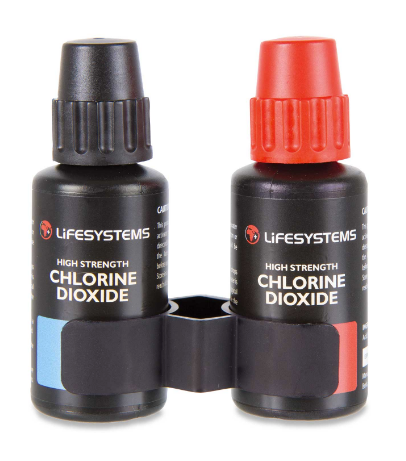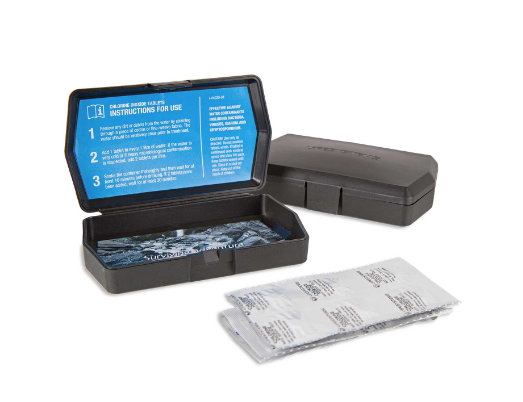Ways to drink wild water by Dan Aspel
- Adventurers
- Blog

As I write this it’s pretty hot outside. Which makes it a good time to start talking about wild water. The first day of June - technically the beginning of meteorological summer in the UK - brought with it some impressive figures of 23.2C in Northern Ireland, 22.3C in Wales and 23.3C in Scotland*. But even without these kinds of temperatures, the sort of activities most of us get up to in the outdoors mean that we lose a lot of fluids to sweat, the natural processes of staying alive and simply breathing. This makes water an important consideration. The question is, how best to find it and drink it when you’re outdoors? In this blog I’m going to take a quick look at the various methods. But first of all we need to make the subject as sexy as possible. So here are some pictures from my past travels of water looking very impressive and powerful, just so that we’re all on the same page...
*We’ll ignore the south-east of England, which was uncharacteristically chilly for once.

Iguazu Falls, on the tri-border between Argentina, Brazil and Paraguay

Haifoss, Iceland

A geyser in action, Iceland
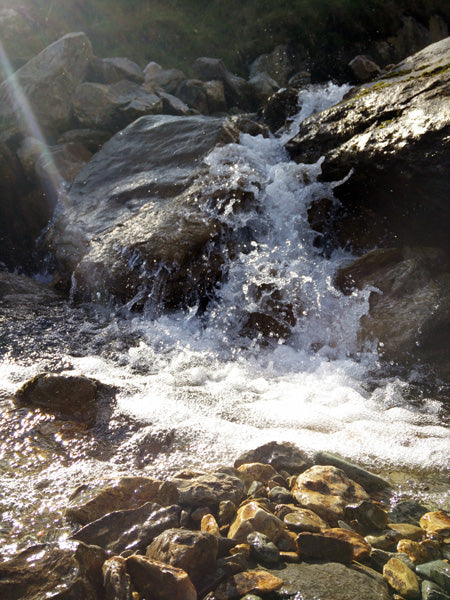
Llanberis Pass, Snowdonia National Park

Cairngorms National Park, Scotland

Ben Macdui, Cairngorms National Park, Scotland
Excited about water now? Excellent.
Let’s look at some of the ways to enjoy it in the UK’s outdoors and wild spaces.
1. Carry it
So obvious it doesn’t need pointing out? Perhaps. But we live in a time when manufacturers of shoes, rucksacks and all other outdoor gear are flogging the lightweight trend for all it’s worth. So it’s easy to look at a litre of clean tap water and see it as a kilo of weight that you just don’t need. But even on a short walk/run/cycle you really may do! Especially if some unforeseen circumstance means you’re out for longer than planned. Just have a read of these symptoms of dehydration and consider that they may lead onto heat exhaustion or heatstroke. Personally, I don’t feel it’s worth risking. Ok, that’s enough scare tactics for now, we all get the point: water is good for you. Let’s move onto some more exciting ideas.
2. Just drink it
Some people do this. And high and far enough away from agriculture, pollutants and other humans there’s every possibility that it will be clean enough and they will come away unharmed. However, it’s impossible to recommend as a long-term tactic as the next points will prove.

When you do draw wild water, take it from a fast-flowing source and not a stagnant one
3. Zap it
Sterilising devices that use UV light have been a popular choice for many years. The advantages are that they kill 99.9 per cent of bacteria, protozoa and viruses (and that figure’s going to be a recurring theme, as no manufacturer will ever claim total efficacy of any purification method). The disadvantages are that they are a) battery operated and b) do not filter out large or small “bits” in the water you’re intending to drink. These aren’t huge downsides, as the batteries typically last for hundreds of litres of water and a neck tube, t-shirt or other permeable piece of clothing makes for a handy pre-filter when first gathering the water in your flask or bottle. I’ve been using the SteriPEN Adventurer Opti for four years now and I’ve found it to be a lightweight and pleasing tool to use while wild camping. And, obviously, I’ve never been sick.
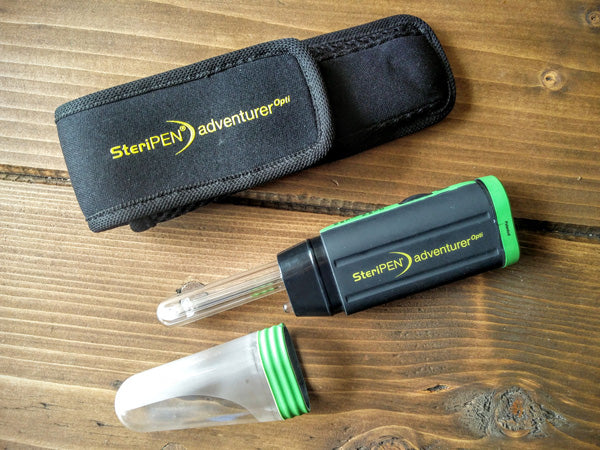
The SteriPEN Adventurer Opti
4. Boil it
You’ll get exactly the same results as from a UV pen here. Once any volume of water has reached a rolling boil it will have rendered 99.9 per cent of bacteria, protozoa and viruses harmless. If you’re going to be taking a camping stove with you anyway then this method makes excellent sense. The only downside is that, depending on the time of year (and thus the ambient and base temperature of the water you’re using), you may have to expend a fair amount of expensive camping fuel to do so. It’s therefore a solid method, but not a cheap or quick one. Again, I’ve been doing this for 16 years without ill effect.
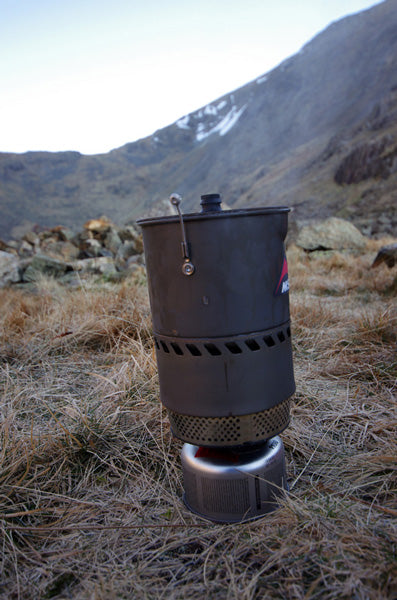
A portable and packable stove makes an excellent purification method
5. Filter it
There are many filters out there in the world. These range from the very, very mini, which take the form of a “straw” and require you to lie down near a water source to suck water up through it, to bottles with in-built filters also dependent on suction, to hand-activated pump filters with disgorging tubes to place in your waiting flask. The big advantage of the more modern examples is that they’re light, portable and quick. Most can process around 2-litres of water per minute and will filter out “bits” in the process as well as 99.9 per cent of bacteria and protozoa… but did you notice how I didn’t say viruses there? That’s a disadvantage of some filters. Although carbon and ceramic-based filtering systems will almost certainly take care of E. coli, Giardia and Cryptosporidium (some of the most common pathogens things you’re likely to find in wild water) the barrier they force the water through (the size of which is measured in microns) often isn’t fine enough to catch water-borne viruses such as Hepatitis A. Now, it’s worth pointing out that I’ve trusted to filters alone on many visits to Snowdonia, the Lakes, the Dales, the West Highlands… and I’ve never contracted anything so unpleasant. However, this is simply my personal experience. And if you want to be as close to certain as possible that you will remain unaffected by wild water, the best solution is undoubtedly the next one.
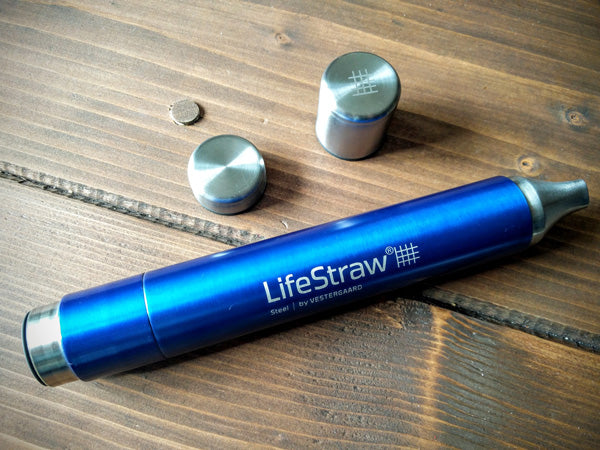
The LifeStraw Steel

The Platypus Meta bottle

The MSR HyperFlow (now replace by the MiniWorks EX)
6. Tab it
Chlorine and Iodine-based products kill everything. They’re also portable, relatively cheap and possible to use as a “belt and braces” addition to any of the above methods - particularly the ones which pre-filter out rough bits of moss, twigs and other flotsam. I’ve mentioned a lot of outside companies in the previous points, so don’t doubt it when I recommend that the products made by Lifesystems as a good choice on this front. Their Chlorine Dioxide drops and tabs are particularly helpful, as they avoid the unpleasant aftertaste normally associated with chemical treatments. If you’d like to be ultra-safe in the UK, and simply sensible in some parts of the developing world then they’re a wise investment.
Lifesystems’ Chlorine Dioxide Droplets
Lifesystems’ Chlorine Dioxide Tablets
I hope you enjoyed this swift introduction to drinking wild water. Make sure to visit the Lifesystems Facebook page and Twitter feed to share any pictures of yourselves enjoying wild water this summer.
… and stay safe out there.
Dan
Dan Aspel is a journalist and Mountain Leader. You can find him at www.danaspel.com
Visit www.lifesystems.co.uk to find a host of kit and equipment for your next outdoor adventure.
